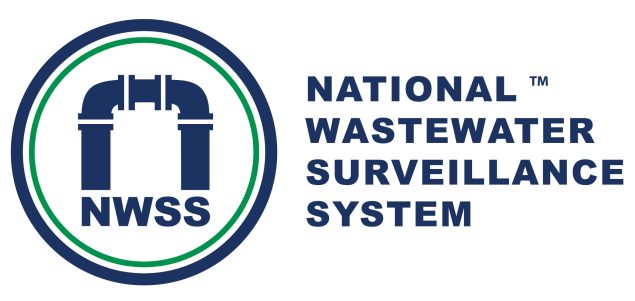About CDC’s National Wastewater Surveillance System (NWSS)
Wastewater monitoring is a valuable, efficient, and robust tool that public health officials can use to guide public health decision making across the nation.

CDC’s National Wastewater Surveillance System (NWSS) provides the public health infrastructure to monitor infectious diseases through wastewater across the country. Wastewater monitoring data can help local public health agencies identify outbreak trends early, direct prevention efforts to where they are most needed, and provide additional insight into disease spread that complements other public health surveillance data. Health departments, community leaders, and individuals can use wastewater monitoring data to make decisions about how best to protect their community.
Number of Wastewater Sampling Sites Reporting to NWSS in the Last Two Months
1,602
Estimated U.S. Population Covered by NWSS
151,000,000
(45%)
Learn about how CDC invests in wastewater surveillance and examples of how wastewater data supports public health action: CDC Wastewater Surveillance [PDF – 2 pages]
NWSS Data Sources
CDC’s National Wastewater Surveillance System (NWSS) includes data collected and reported by:
- State and local public health departments: Data from state and local health departments are reported to CDC and supported with funding through the Epidemiology and Laboratory Capacity for the Prevention and Control of Emerging Infectious Diseases (ELC) Cooperative Agreement.
- CDC’s national wastewater testing contract: Data from sites are supported through CDC’s national wastewater testing contract (currently with Verily Life Sciences, LLC).
- An academic partner group (WastewaterSCAN): These data are collected as part of a partnership between Stanford University, Emory University, and Verily and reported to CDC.
Contact your state or local health department to learn more about wastewater monitoring efforts in your community.

Wastewater monitoring provides early detection of increasing cases.
Wastewater data can show changes in disease trends before trends are seen in clinical cases. This information can be used to prepare health care providers and hospital systems for upcoming increases in visits and hospitalizations and can inform other public health prevention efforts.

Wastewater monitoring is independent from medical systems.
Wastewater monitoring can detect infection in a community whether or not people have symptoms. Unlike other types of public health reporting, wastewater monitoring does not depend on people having access to healthcare, visiting a doctor when sick, or availability of testing for an infection.

Wastewater monitoring is fast and efficient.
From toilet flush to results only takes about five to seven days. Wastewater monitoring from a single treatment plant can provide information on community-level disease trends for hundreds, thousands, even millions of people.

Wastewater monitoring has national coverage.
Wastewater monitoring is implemented in all 50 states, 7 territories, and some tribal communities. Wastewater monitoring can be implemented in any community that is served by municipal wastewater collection systems.

Wastewater monitoring can be used to track emerging health threats.
Wastewater monitoring can meet changing public health needs because it can be rapidly adapted to track emerging health threats. CDC is working to better understand how wastewater monitoring can also be used to detect and respond to other infectious disease threats.

Wastewater monitoring can be used to track changes in health threats.
By studying the genetic material of tiny organisms that can make people sick, pathogen genomics can identify when there are important changes to these organisms, where these changes are found, and how common they are. For example, pathogen genomics can be used to track the prevalence of SARS-CoV-2 (the virus that causes COVID-19) variants in communities.

Wastewater monitoring is complementary to other public health surveillance data.
Wastewater data are most useful when used with other surveillance data. When reviewed together, wastewater and other surveillance data can provide a more complete picture of disease spread within a community.
…